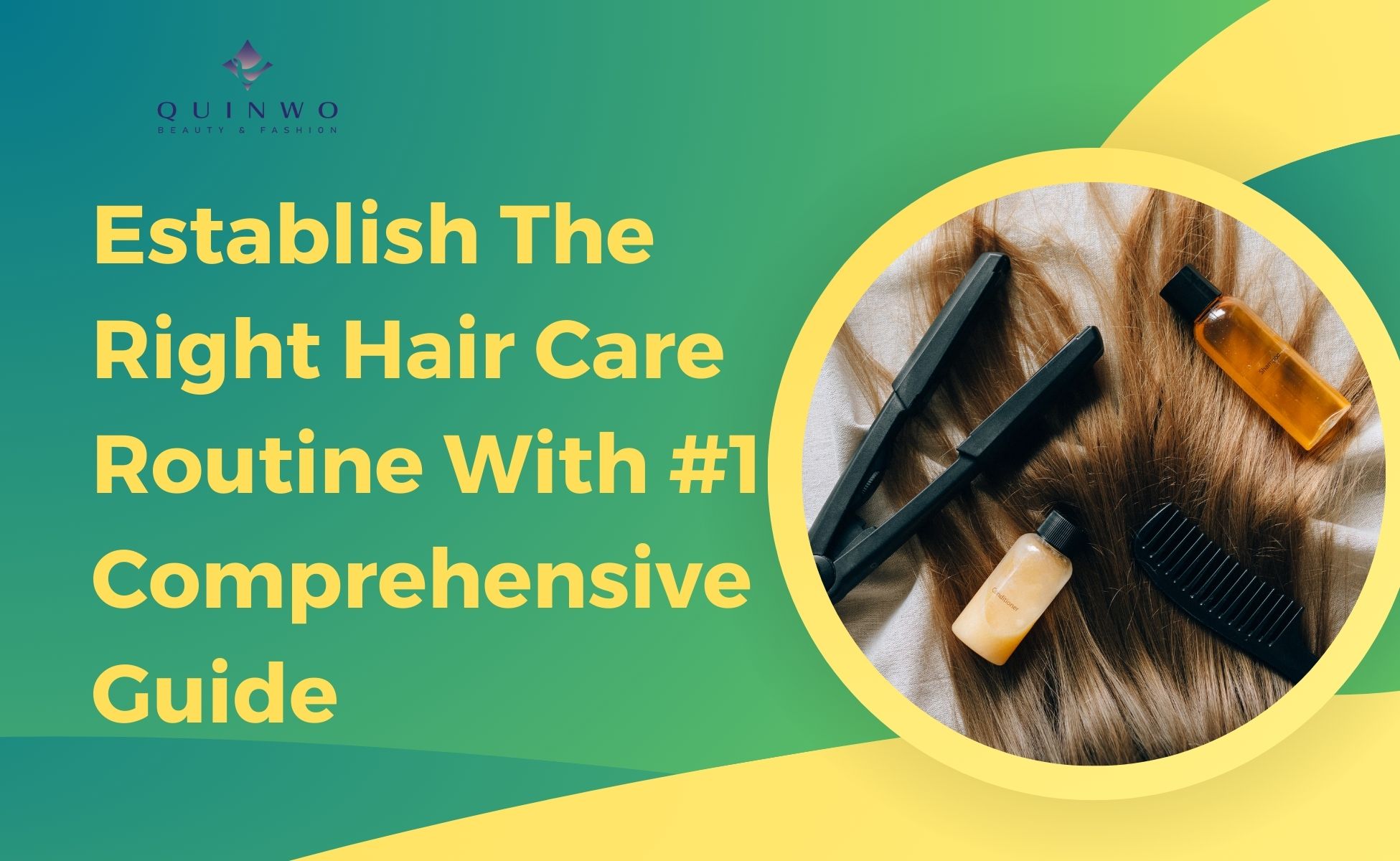Establish The Right Hair Care Routine With #1 Comprehensive Guide
How many of us really take care of our hair? It is not about affecting our appearance but also about keeping healthy hair. This is where establishing the right hair care routine comes in. Taking care of it properly can make a significant difference. Understanding the specific needs is the first step toward establishing an effective hair routine.
No one solution works for everyone. Each person has their own hair type, and you must establish the right hair care routine according to it. You may not get it right immediately, as you will need some time to figure out what suits you.
You can transform your hair from dull to dazzling with the right approach. In this guide, we will guide you on establishing a perfect hair care routine that leaves you with beautiful, manageable hair. Le’s dive in.
Right Hair Care Routine #1 - Identify Your Hair Type

First of all, you will want to identify your hair type. Each hair type requires specific care techniques and products. Start with observing your hair texture. Hair texture refers to how thick or thin each individual strand of hair is. Gently take a single strand of hair between your fingers. If it feels fine and barely noticeable, you likely have fine hair. If it feels wider and more noticeable, you likely have coarse hair.
Also, you will need to consider your hair density. It refers to the number of hair strands on our scalp. Grab a handful of hair in different areas and assess how much scalp is visible. You likely have low hair density if you can see a lot of scalps. If your scalp is not very visible, you have high hair density.
Evaluating hair porosity is another factor in measuring your hair’s ability to absorb and retain moisture. You can drop a strand of hair into a glass of water. If it sinks quickly, you have high porosity, and your hair absorbs moisture easily. If it floats, you have low porosity.
Examine your hair elasticity too. It can measure how well your hair stretches and returns to its original state without breaking. If your snap easily after you stretch it, your hair has low elasticity. If you can stretch the strand, it has high elasticity.
Right Hair Care Routine #2 - Choose The Right Products

When establishing the right hair care routine, finding the right hair products is important. Each bottle promises miraculous results, but not all products are created equal. Choose the products according to your hair type and specific needs.
Make it a habit to read the labels on the product. Product labels can provide a wealth of information if you know what to look for. Avoid products that contain harsh chemicals which can strip your hair of its natural oils and lead to dryness. Go for products with natural and nourishing ingredients.
Remember not to overload your hair with too many products. It can be tempting to try every new product that hits the market, but it can actually do more harm than good. Stick to the basics. Get a gentle shampoo, a nourishing conditioner, and perhaps a targeted treatment or styling product. It helps to avoid overwhelming your hair and scalp with too many ingredients.
Right Hair Care Routine #3 - Drying And Styling Techniques

Drying and styling your hair can impact health, appearance, and manageability. Using the right techniques can make a world of difference.
After washing your hair, gently pat it with a soft microfiber towel. Allowing your hair to air dry is a gentle option if you have time. Detangle your hair with a wide-tooth comb after washing, and then let it dry naturally.
If you must blow your hair dry, use the lowest heat setting to prevent heat damage. Hold the dryer safely from your hair and move it constantly to avoid overheating one spot. If you use any heat styling tools, apply a heat protectant spray. This forms a protective barrier that shields your hair from excessive heat and reduces the risk of damage.
Bad Habits To Avoid For Your Hair Care

1. Not Getting Regular Trims
Neglecting regular times can cause split ends. Split ends when the hair shaft frays and splits into two or more sections. If you ignore the issues, split ends can travel upward, causing more damage and making your hair appear unhealthy and unkempt.
Hair with split ends is more prone to breakage. The splits weaken the hair shaft making it more susceptible to snapping and breaking. It can lead to uneven lengths and an overall thinning appearance.
2. Overshampooing Oily Hair
Oily hair can be frustrating to deal with, and what most people do is wash their hair excessively. But, over-shampooing your can can affect the health of your scalp and the appearance of your looks. It strips away the excess sebum and the natural oils that your scalp needs to stay balanced.
Besides, it can also lead to an increase in oil production. Your scalp’s sebaceous glands react to the loss of oils by producing more sebum to keep the scalp moisturized. This can create a vicious cycle where you need to shampoo more often due to excessive oiliness.
3. Detangling Your Hair The Wrong Way
It can cause discomfort when your hair is tangled, and you want to detangle it as soon as possible. However, how you approach detangling can impact the condition of your hair. One of the most common mistakes when detangling is being too rough. Aggressively pulling or tugging at knots and tangles can lead to breakage, split ends, and unnecessary stress on the hair shaft.
Detangling from the roots is a common mistake that can worsen tangles and cause discomfort. Always start detangling from the ends of your hair and work your way up. This method prevents knows from traveling upward and minimizes pain. Don’t rush your time through the process; it can lead to skipped knots and unintentional breakage. Detangling requires time and care, so be patient.




